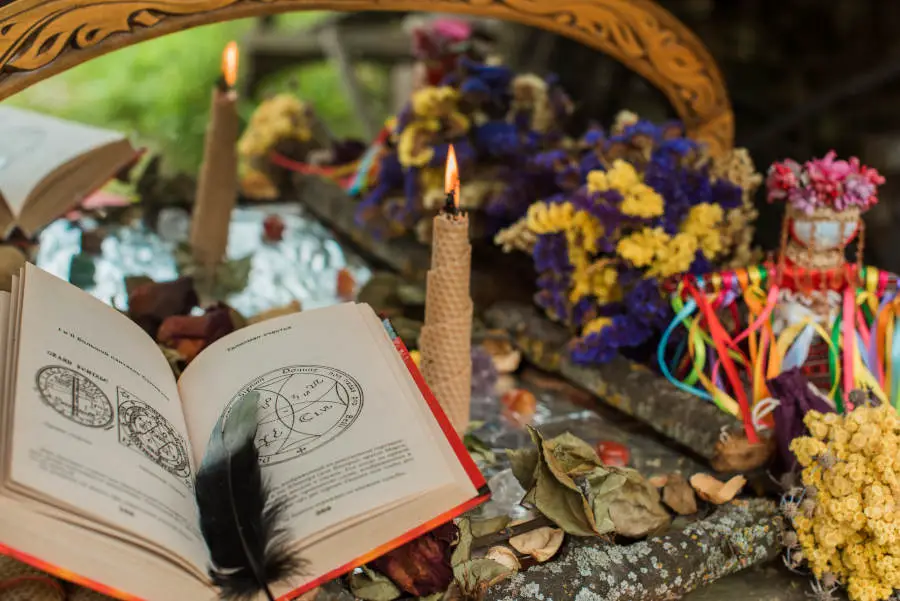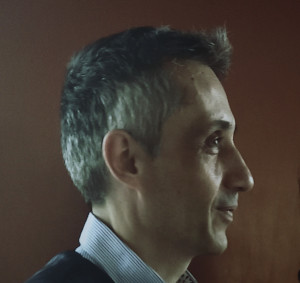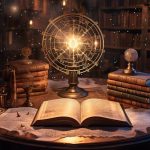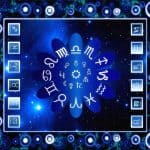Western society’s perception of magic has been defined by centuries of fascination, misunderstanding, and cultural tension. Seen alternately as primitive, foreign, and even dangerous, magic has long served as a mirror reflecting Western society’s fears and values.
From its rejection as an irrational or demonic practice to its modern-day association with personal empowerment and alternative spirituality, magic has both challenged and reinforced Western cultural norms.
In recent centuries, key figures like Aleister Crowley and movements like Theosophy have brought magic into new contexts, inspiring modern revival and reshaping its role in contemporary society. Today, magic persists as a spiritual and cultural phenomenon, yet it still faces common misconceptions, often misunderstood or stigmatized in popular media.
As we look to the future, magic continues to evolve, reflecting the resilience of spiritual paths that exist outside traditional frameworks while revealing deeper insights into today’s beliefs, values, and global influences.
The Four Main Discourses of Magic: Why Western Society Has Long Feared Magic
Magic as “Primitive” and Non-Rational Thinking
One of the most enduring critiques of magic in Western society is the belief that it embodies “primitive” or non-rational thinking. This view, rooted in early anthropology, categorized magic as an archaic way of understanding the world, one that relied on “associative thinking”—a method of reasoning based on perceived connections rather than empirical evidence.
Pioneering anthropologists like Edward Burnett Tylor and James Frazer portrayed magic as an unsophisticated worldview, seeing it as a precursor to both religion and science that reflected early human beings’ misunderstandings of causality.
This perspective positioned magic as inherently at odds with the modern rational-positivist worldview that Western society values. Through this lens, practices like casting spells or using charms were seen as ineffective “superstitions” that betrayed an outdated mindset.
Frazer’s influential distinction between “contagious” and “homeopathic” forms of magic reinforced this view, asserting that such practices were remnants of an intellectual phase long since surpassed by science. As a result, Western culture has often dismissed magic as irrational and incompatible with modern thought.
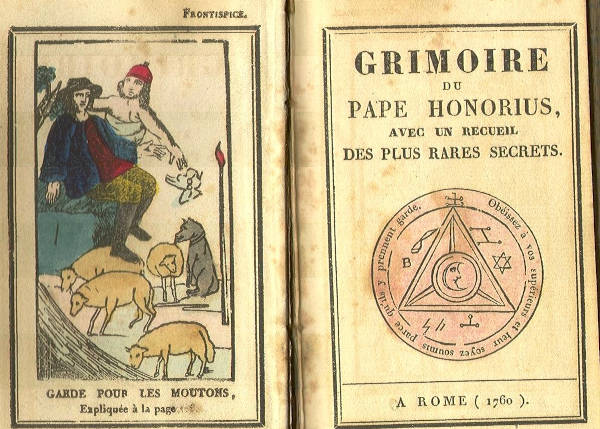
Magic as the “Exotic Other” from Foreign Lands
Magic has long been cast as an “exotic other,” representing the mystical practices of foreign cultures. From the ancient Greeks, who saw magic as a mysterious import from Persia, to later Christian societies that associated it with Eastern religions, Western culture has frequently defined magic as something alien and unfamiliar. This perception allowed Western society to portray magic as a threat, depicting it as an intrusive practice incompatible with its values.
During the era of Western colonialism, magic continued to be portrayed as a hallmark of non-Western and indigenous cultures. Missionaries, for example, often characterized the religions they encountered in Asia, Africa, and the Americas as “magical” and primitive.
This attitude served to justify colonial domination by contrasting the “advanced” Christian faith with the supposedly superstitious practices of other religions. By defining magic as foreign, Western culture reinforced its own identity as rational, civilized, and enlightened, while portraying other cultures as sources of dangerous or misguided beliefs.
Why Magic Was Seen as Anti-Christian and Spiritually Dangerous
In the Christian tradition, magic was often viewed as fundamentally opposed to faith, particularly due to its perceived reliance on supernatural beings or powers outside of God. Early Christian authorities, faced with differentiating miracles from magical acts, established strict theological boundaries between divine miracles and “sorcery.”
This distinction, solidified by thinkers like Saint Augustine, framed magic as illicit and spiritually dangerous because it was thought to involve demonic forces or other entities antagonistic to God’s will.
Throughout the Middle Ages, the Church intensified its stance against magic, equating it with heresy and idolatry. Magic, in the eyes of the Church, represented a direct affront to God’s authority. The Church argued that magical practices often attempted to manipulate the natural world or gain supernatural knowledge through unauthorized means, which was seen as a violation of religious submission.
Consequently, magic became closely associated with heresy, with practitioners often facing severe punishment for their perceived defiance of Christian doctrine. This deep-seated belief in magic’s anti-Christian nature cemented a lasting fear of magic within Western religious thought.
Related Reading: “Church Versus Magic in The Early Middle Ages“ – Opens in new tab
Magic as Evil Incarnate: The Popular Connection to Satanism
Magic’s association with evil reached new heights in popular culture through its connection to Satanism. In both medieval and modern times, magic has often been depicted as a pathway to dark or diabolical forces. This fear gained widespread traction during the witch hunts of the Renaissance, where accusations of witchcraft commonly included charges of demonic pacts and satanic worship.
The idea that practitioners could wield power through allegiance to the Devil added a sinister dimension to public perception, painting magic as a direct threat to the moral and spiritual fabric of society.
This connection persisted into the 20th century with the “Satanic Panic” of the 1980s and early 1990s. During this period, fears of a widespread network of Satanists, magicians, and occultists engaging in criminal acts became a common, though unsubstantiated, narrative.
The media and fundamentalist groups further fueled these fears, leading to sensationalized stories of ritual abuse and secret cults. While largely discredited today, this association between magic and evil left a lasting mark, perpetuating the belief that magical practices were inherently tied to malevolent forces.

Magic and the Self-Identity of the West: How Society Defines Itself Against the “Other”
In Western society, magic has often come to represent the “Other”—everything seen as contrary to the norms, values, and rationality that characterize the modern Western worldview. From its early history, Western culture has distanced itself from magical practices by portraying them as irrational, foreign, and potentially dangerous.
This process of “othering” magic allows Western society to define its own identity as rational, structured, and virtuous. The perception of magic as chaotic, unstructured, or morally suspect has strengthened this contrast, with magic symbolizing a departure from orderly societal norms.
By casting magic as oppositional, Western culture has created a dichotomy in which mainstream society and religion are presented as the path of enlightenment and truth, while magic is relegated to the realm of the unusual or deviant. This separation has helped reinforce a cultural narrative where the values of reason, science, and monotheistic religion stand as hallmarks of Western identity, while magic remains in the shadows, an alluring yet disapproved counterpart.
The Role of Anti-Structures and Liminality in Magic
Magic occupies a unique space in the Western mindset as a form of “anti-structure”—a concept described by anthropologist Victor Turner as a force that stands outside traditional social structures. Anti-structures are phenomena that disrupt or exist outside of societal norms, creating spaces where typical rules and expectations don’t apply.
In this way, magic operates as a liminal, or threshold, experience, challenging the boundaries of normality. This liminality allows magic to serve as a testing ground for exploring possibilities that lie beyond accepted structures, offering a glimpse into realms that mainstream society avoids or marginalizes.
Because magic exists in this anti-structural space, it creates a contrast that reinforces societal norms by showing what falls outside of them. As a result, magic indirectly strengthens Western values and structures by existing as an “opposite” or “mirror” to the accepted order.
This role as an anti-structure gives magic a mysterious, transgressive quality that attracts those seeking alternatives to traditional paths, but it also solidifies magic as something set apart from the mainstream.
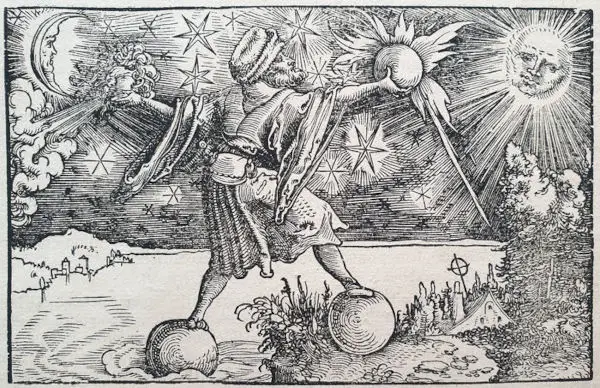
Magic as a “Shadow” to Modern Western Society’s Self-Perception
Western culture often projects onto magic the qualities it rejects or fears within itself, making magic a “shadow” of its self-perception. This shadow side includes traits that modern Western society either seeks to avoid or has not fully embraced, such as irrationality, mysticism, and a connection to the unknown.
By defining magic as the “other,” Western culture not only distances itself from these traits but also creates a boundary around its own identity, viewing itself as more logical, controlled, and enlightened in contrast.
The concept of magic as a cultural shadow reveals underlying tensions in Western society’s self-conception. While society prides itself on rationalism and scientific progress, it simultaneously experiences fascination with and fear of the mystical, irrational, and spiritual dimensions that magic represents.
This duality keeps magic alive as both a source of curiosity and apprehension, allowing it to serve as a reflection of what lies beneath the surface of Western cultural identity.
Related reading: The Evolution of Modern Western Magic: From Ancient Mysticism to Today’s Spiritual Path – Opens in new tab
From Esoteric to Occult: How Magic Found a New Home in the 19th and 20th Centuries
With the onset of the 19th century, Western society experienced a cultural revolution that allowed magic to resurface in new and more organized forms. As traditional religious authority began to wane under the pressures of scientific advancement and industrialization, many people sought alternative spiritual paths.
Magic found a place within the burgeoning interest in esotericism and the occult, as individuals turned to mystical practices for personal insight and empowerment. This shift marked a transition from magic being an obscure or private pursuit to a more structured, community-based phenomenon.
The occult revival brought with it the formation of societies and orders dedicated to the study and practice of magic, such as the Hermetic Order of the Golden Dawn. These organizations synthesized elements from various mystical traditions, including Kabbalah, alchemy, astrology, and ceremonial magic, offering structured systems of magical education and practice.
The Golden Dawn and similar groups became central to the popularization of the occult, providing a supportive framework for those eager to explore esoteric wisdom outside conventional religious constraints.
The Influence of Key Figures Like Aleister Crowley on Modern Magic
Aleister Crowley, one of the most influential occultists of the 20th century, played a pivotal role in shaping modern perceptions of magic. Known for his provocative persona and revolutionary ideas, Crowley introduced a new approach to magic that he called “Magick” (intentionally spelled with a “k” to differentiate it from illusionary stage magic).
Crowley’s definition of Magick as “the Science and Art of causing Change to occur in conformity with Will” placed an emphasis on the practitioner’s intention and personal willpower as the driving forces behind magical acts.
Crowley’s influence extended beyond his own writings and practices; he inspired future generations of magicians, occultists, and alternative spiritual seekers. His spiritual philosophy, Thelema, which promoted the principle “Do what thou wilt shall be the whole of the Law,” encouraged a highly individualized and experiential approach to spiritual practice.
Through his work, Crowley linked magic with self-transformation, making it accessible to modern audiences as a form of personal empowerment rather than a purely mystical or religious pursuit.

Theosophy, Spiritualism, and the Rise of Modern Magical Movements
Alongside Crowley’s contributions, movements like Theosophy and Spiritualism gained popularity, bringing magic and esotericism into mainstream consciousness. Founded by Helena Blavatsky in the late 19th century, Theosophy combined elements from Eastern and Western spiritual traditions, offering a vision of the universe that included reincarnation, spiritual evolution, and an understanding of “hidden” or occult knowledge.
Blavatsky’s teachings suggested that humanity could access profound truths and spiritual powers by studying ancient wisdom, sparking widespread interest in mystical practices and concepts of hidden dimensions.
Similarly, the Spiritualist movement attracted attention as people sought communication with the dead through mediums and séances. Spiritualism’s emphasis on contact with spirits provided a practical application for magical ideas, making them tangible and relatable for many.
It laid the groundwork for the blending of mystical experience with scientific inquiry, with mediums and spiritualists framing their practices as experiments that could provide insights into the afterlife. Together, these movements helped popularize modern magic as a means of exploring spiritual dimensions beyond traditional religious frameworks, opening doors for a wave of new magical practices that continue to evolve today.
Related reading: Ancient Magic: From Divine Rituals to Dark Superstitions – Ancient Rome and Early Christianity – Opens in new tab
Magic in Today’s World: A Living Tradition and Cultural Phenomenon
In an era marked by secularism and scientific progress, magic has maintained an unexpected relevance. Many people today turn to magical practices as a means of personal expression, empowerment, and connection to something greater than themselves.
For some, magic provides a way to explore spirituality outside of traditional religious structures, allowing for individual freedom in practice and belief. In increasingly secularized societies, this flexibility is appealing, offering a personal and adaptable spiritual path that can coexist alongside rational and scientific worldviews.
The persistence of magic in modern Western societies can be attributed to its symbolic richness and its ability to address human desires for meaning, healing, and transformation. In a world where institutionalized religion often seems rigid or outdated, magic stands as a customizable and evolving practice, resonating with those who seek personal agency over their spiritual lives.
This adaptability allows magic to thrive within contemporary culture, despite—or perhaps because of—the decline of traditional religious authority.
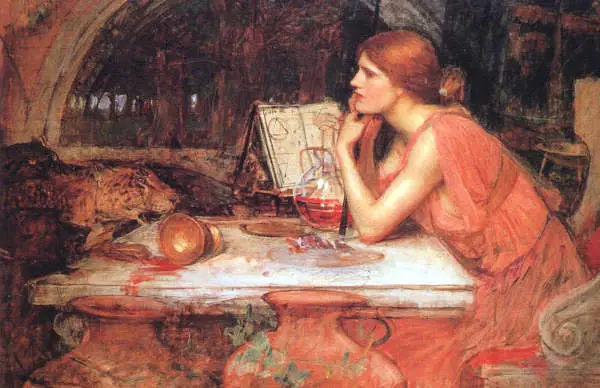
The Appeal of Magic as a Personal, Spiritual Practice
Modern magic appeals to many as an accessible, individualized path to self-discovery and empowerment. Unlike traditional religious systems, which may emphasize communal beliefs and structured rituals, magic often encourages practitioners to cultivate their own beliefs and techniques, making it a deeply personal journey. For many, magic is seen not as a set of rules to follow but as a creative and intuitive practice that empowers them to shape their lives, intentions, and identities.
Magic’s appeal also lies in its connection to nature, ancient wisdom, and the cycles of the earth, which can feel grounding in a fast-paced, technology-driven world. Practices such as meditation, spellwork, and ritual allow practitioners to connect with their own intentions and focus on self-growth and healing. In this way, magic provides an alternative spiritual framework that aligns with contemporary values of individualism, self-expression, and personal empowerment.
The “Satanic Panic” of the 1980s: Understanding Magic’s Stigma in Recent History
Despite the renewed interest in magic, recent history has shown that stigma and fear still surround it, as evidenced by the “Satanic Panic” of the 1980s. During this period, a wave of moral panic swept through the United States and parts of Europe, fueled by sensationalized stories of satanic cults and occult rituals.
Books, media coverage, and fundamentalist groups spread allegations of widespread Satanic worship and child abuse, connecting these fears to any practices remotely associated with magic or the occult. Many innocent people faced accusations and legal battles based on unsubstantiated claims, casting a long shadow over the public perception of magic.
Although the panic was eventually debunked, it revealed the lingering association of magic with deviance and evil in popular consciousness. The Satanic Panic left a cultural impact that persists today, reminding us of the societal tensions and misunderstandings surrounding magic.
Yet, for many modern practitioners, this period also highlighted the need to reclaim magic as a positive and empowering practice. By embracing magic openly and educating others about its diverse traditions, modern-day practitioners work to redefine magic as a legitimate, valuable part of contemporary spirituality and personal growth.
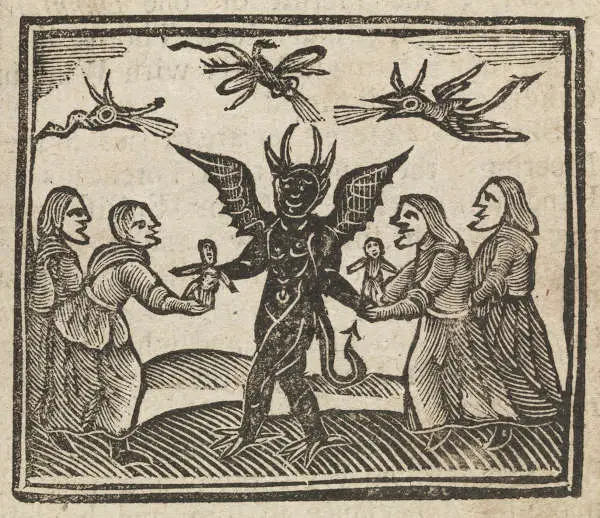
Common Misunderstandings of Magic: Separating Fact from Fiction
Debunking the Idea of Magic as Purely Evil or Malicious
One of the most enduring misconceptions about magic is that it is inherently evil or malicious. This belief is largely rooted in historical narratives that framed magic as dangerous and aligned with demonic forces. However, magic in the modern context is not centered on harm or ill intent.
For many practitioners, magic is a tool for healing, self-reflection, and personal empowerment, with practices focused on meditation, self-care, and spiritual connection. Far from promoting evil, these rituals often encourage practitioners to align with natural energies and focus on positivity.
The notion of magic as malevolent is also challenged by the intentions of most practitioners. For the majority, magic represents a means of fostering personal growth and gaining a deeper understanding of life’s mysteries. Rituals often aim to bring balance and clarity rather than harm.
This modern interpretation of magic reclaims it as a peaceful, introspective practice, showing that magic, like any tool, depends on the intentions and values of those who use it.
Magic vs. Satanism: Why These Are Often Mistakenly Intertwined
The historical connection between magic and Satanism is a misunderstanding that continues to persist, despite the many distinctions between these practices. Magic, particularly in its modern form, is a broad term encompassing various traditions, including Wicca, astrology, divination, and ritual work—none of which are inherently related to Satanism.
Satanism, by contrast, is a specific religious belief system with its own values and practices, which do not necessarily involve or encourage the use of magic.
The mistaken link between magic and Satanism gained traction during the witch hunts and resurfaced in the 1980s during the Satanic Panic, when media and fundamentalist groups connected occult practices with Satan worship. In reality, many magical traditions actively avoid any association with Satanism, as they view magic as a path toward spiritual awareness and ethical practice.
This confusion often stems from the fact that both Satanism and certain forms of magic exist outside traditional religious frameworks, which can lead to misunderstandings and fear in the wider culture.
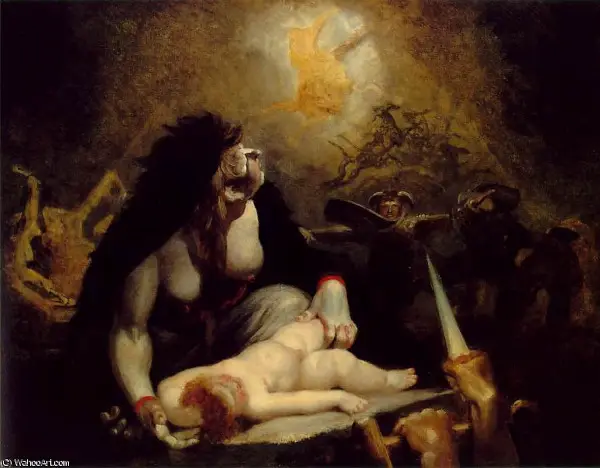
How Popular Culture Has Both Helped and Hurt the Image of Magic
Popular culture has had a significant influence on public perception of magic, creating both fascination and misunderstanding. On one hand, movies, television shows, and books—such as the “Harry Potter” series—have brought magic into mainstream consciousness, inspiring interest and curiosity in magical themes. This exposure has helped normalize magic as a topic of interest, presenting it as imaginative and exciting rather than dangerous or taboo.
However, pop culture has also contributed to some enduring stereotypes about magic. Media portrayals often emphasize dark, mystical forces, secret societies, or malevolent witches, which can reinforce the notion that magic is mysterious, dangerous, or morally ambiguous.
Additionally, dramatic portrayals of magic as a powerful, almost supernatural force can create unrealistic expectations about what modern magical practices entail. While popular culture has broadened the appeal of magic, it has also shaped perceptions that can hinder understanding of its true nature as a personal and largely peaceful spiritual path.
Related reading: Beyond the Shadows: How Occultism Shaped Politics, Science, and Social Change – Opens in new tab
Looking to the Future: The Resilience and Transformation of Western Magic
Globalization has significantly impacted the practice and perception of magic in Western societies, blending diverse cultural influences into a dynamic and evolving tradition. Increased access to information and cultural exchange has introduced Western practitioners to magical and spiritual practices from around the world, including shamanism, Eastern mysticism, and indigenous healing traditions.
This cultural interchange has broadened the scope of modern Western magic, creating a more inclusive, eclectic approach that integrates elements from multiple belief systems.
As a result, today’s magical practices are more varied than ever, with practitioners incorporating rituals, symbols, and philosophies from global traditions. The accessibility of these influences through books, online resources, and international communities has allowed modern magic to evolve into a cross-cultural phenomenon.
This fusion of traditions highlights magic’s adaptability and its potential to thrive in an interconnected world, where individuals seek personalized paths to spirituality that resonate with their values and experiences.
The Role of Magic in Alternative Spirituality and New Age Movements
Magic has found a natural home within the alternative spirituality and New Age movements, where it is valued as a tool for self-exploration and personal transformation. In these movements, magic is often practiced alongside other spiritual disciplines like meditation, energy healing, and mindfulness.
The emphasis on personal empowerment and direct experience aligns well with the core principles of modern magical practices, making magic a popular choice among those exploring alternative spiritual paths.
In New Age and alternative spirituality, magic is reframed as a form of “inner work” or “manifestation,” where practitioners focus on shaping their inner worlds to affect their external lives. Rather than viewing magic as supernatural, these communities often regard it as a form of psychological or energetic influence that aligns with the individual’s intent and will. This approach reflects a shift from viewing magic as something mystical or hidden to understanding it as a practical, transformative practice that supports personal growth.

What Modern Western Magic Reveals About Contemporary Beliefs and Values
Modern Western magic reveals much about contemporary beliefs and values, especially the desire for autonomy, self-expression, and a connection to the sacred outside traditional religious frameworks. Today’s practitioners often see magic as a way to personalize spirituality, creating a path that reflects their unique identity and beliefs. This emphasis on individuality mirrors broader societal trends that prioritize personal freedom, creativity, and authenticity.
The resilience of magic in Western culture also reflects a growing interest in holistic and integrative approaches to life. Many people turn to magic to find balance, healing, and a sense of connection to nature, responding to a perceived lack of these elements in modern, secular life.
By integrating magic with self-help, wellness, and mindfulness, modern practitioners emphasize values that prioritize mental and emotional well-being, as well as respect for the interconnectedness of all things.
This ongoing transformation of magic illustrates its adaptability and its ability to meet the needs of contemporary society, positioning it as a vibrant and evolving tradition that will likely continue to thrive in the future.
Final Thoughts
The story of modern Western magic is one of transformation and resilience. Despite centuries of misunderstanding and cultural bias, magic has found new life in the modern era, resonating with those seeking spiritual exploration outside conventional paths.
While myths and misconceptions linger, today’s magic is increasingly seen as a path of personal growth, empowerment, and cultural expression. As globalization and alternative spirituality continue to shape magic’s evolution, it remains a living tradition, adaptable to the shifting values of contemporary society and uniquely poised to inspire future generations.
Do you want to learn more about Magick? Check out our recommendations at “Magick Bookshelf” and many free resources at our “Free Magick Library“
This article is based on: “Aries: Journal for the Study of Western Esotericism, 12 ( 1 ), special issue on Modern Western Magic, guest edited by Henrik Bogdan”
Stay in Touch
 Join our newsletter by using the forms on this website or click here!
Join our newsletter by using the forms on this website or click here! Follow us on Google News
Follow us on Google News Follow us on Facebook
Follow us on Facebook
Featured image by Depositphotos

